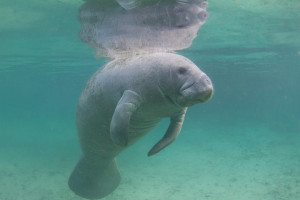 The Everglades is an amazing and pristine ecosystem that is a unique biome that is home to a huge wealth of different flora and fauna. For nature lovers, outdoor enthusiasts, and adventure seekers alike, the Everglades is a one-of-a-kind place that is unmatched. A lot of people, when planning a vacation to the Everglades, choose to experience Everglades National Park, which is a protected area of the Everglades where plants, animals, birds, and fish are protected and conserved.
The Everglades is an amazing and pristine ecosystem that is a unique biome that is home to a huge wealth of different flora and fauna. For nature lovers, outdoor enthusiasts, and adventure seekers alike, the Everglades is a one-of-a-kind place that is unmatched. A lot of people, when planning a vacation to the Everglades, choose to experience Everglades National Park, which is a protected area of the Everglades where plants, animals, birds, and fish are protected and conserved.
One of the most interesting and humbling aspects of visiting the Park is that it (and the Everglades in general) are home to a number of threatened and endangered species of plant and animal. This means that in this environment, you have the opportunity to see truly endangered species that are at risk of extinction. These are species that need to be protected and saved because of their biological diversity and importance to the functioning of the overall ecosystem.
What a rare honor to have the chance to see creatures that may number in just the tens. Sadly, with each passing year, it seems that more plants and animals become threatened, endangered, or extinct, but with preservation efforts like those are many national parks, we can at least hope to save and protect small areas that these creatures can safely dwell within.
There are a number of different threatened and endangered species that you might encounter on a trip to the Everglades. What follows is a brief rundown of the same species that are included on the protected list.
Threatened or endangered species of animal that call the Everglades home include:
- American Alligator
- American Crocodile
- Sea Turtles
- Manatees
- Florida Panther
- Various Bird Species
The park is also home to a variety of threatened and endangered plants that include:
- Buccaneer Palm
- Florida Thatch Palm
- Tree Cactus
- Manchineel
- King’s Holly
- Silver Thatch Palm
- Bitter Thatch Palm
- Lignum-Vitae
The protection of these plants and animals is vital and also our responsibility. Man is the reason that these habitats have been continually encroached upon and altered beyond repair. Since the degradation is our doing, we have the moral responsibility to save and protect that which remains. The Everglades National Park is home to a number of threatened and endangered plants and animals that can be seen nowhere else. Visiting the park gives you the opportunity to experience the once-in-a-lifetime honor of witnessing something rare and majestic.
To experience the wonders of this park first hand, jump on an airboat tour with Captain Mitch. To learn more, click the Captain Mitch’s Airboat Tours page. Click here to book a airboat ride or call 800-368-0065 to reserve a spot today.
 Each year, Earth day is celebrated on April 22. Back in 1970, 20 million people participated in the first Earth Day celebration. Fast forward 47 years, and we now have the Clean Air, Clean Water, and Endangered Species Acts. Florida is home to the Everglades, many species of animals, fish and birds, and thousands of plant life, so Earth Day and these environmental laws have special meaning to this state.
Each year, Earth day is celebrated on April 22. Back in 1970, 20 million people participated in the first Earth Day celebration. Fast forward 47 years, and we now have the Clean Air, Clean Water, and Endangered Species Acts. Florida is home to the Everglades, many species of animals, fish and birds, and thousands of plant life, so Earth Day and these environmental laws have special meaning to this state.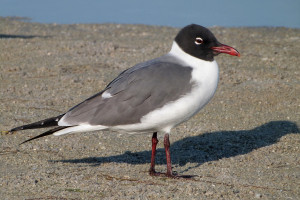 Do you know what the most common gull in the Everglades is? The laughing gull! These gulls are medium in size with long wings and legs. They are a coastal warm-weather species, which is why they can be found hanging around the Everglades year round. Below, we wanted to share some fun facts about this bird.
Do you know what the most common gull in the Everglades is? The laughing gull! These gulls are medium in size with long wings and legs. They are a coastal warm-weather species, which is why they can be found hanging around the Everglades year round. Below, we wanted to share some fun facts about this bird.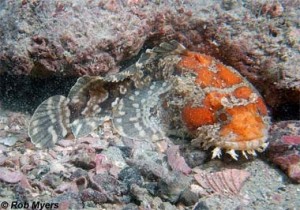 There are around 300 different species of fish swimming in the waters of the Everglades National Park. Some of them look straight out of pre-historic times, like the Gulf toadfish. These fish make their presence know. They’re one of the few fish out there that can make sounds that humans can actually hear. Read the list below for some more interesting facts on this fish:
There are around 300 different species of fish swimming in the waters of the Everglades National Park. Some of them look straight out of pre-historic times, like the Gulf toadfish. These fish make their presence know. They’re one of the few fish out there that can make sounds that humans can actually hear. Read the list below for some more interesting facts on this fish: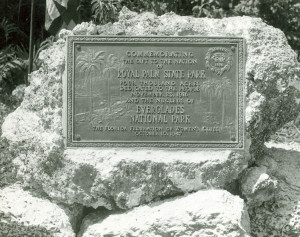 The Everglades is vast, and it has so many different areas for people to explore. One such area is Royal Palm State Park. This Park was established in 1916, but it was surveyed back in 1847 by Jack Jackson. Scientists studied the area and it became known for its botanical diversity and hammock.
The Everglades is vast, and it has so many different areas for people to explore. One such area is Royal Palm State Park. This Park was established in 1916, but it was surveyed back in 1847 by Jack Jackson. Scientists studied the area and it became known for its botanical diversity and hammock.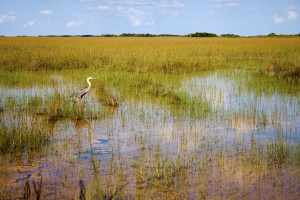 In December, President Obama signed a bill that authorized $2 billion to go towards restoration efforts in the Everglades. This bill was called The Water Infrastructure Improvements for the Nation (WIIN) Act of 2016. This act provides half the funding needed for the Central Everglades Planning Project, and the other half of the funding will come from Florida.
In December, President Obama signed a bill that authorized $2 billion to go towards restoration efforts in the Everglades. This bill was called The Water Infrastructure Improvements for the Nation (WIIN) Act of 2016. This act provides half the funding needed for the Central Everglades Planning Project, and the other half of the funding will come from Florida.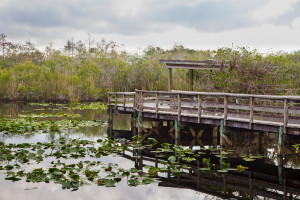 Want to take a trip to the Everglades? It’s certainly a once-in-a-lifetime experience for many. On an airboat tour with Captain Mitch, you’ll be able to get up-close views of the beautiful surroundings, along with the opportunity for many wildlife sightings. However, people often have many questions before entering the Everglades. The National Park Service has many Frequently Asked Questions (FAQ) on its website to help people be better prepared for their trip to the Everglades. Below, we wanted to share some of these questions with you, so you can have a great time and feel comforted knowing as much as possible before you jump on a tour and explore the wetland.
Want to take a trip to the Everglades? It’s certainly a once-in-a-lifetime experience for many. On an airboat tour with Captain Mitch, you’ll be able to get up-close views of the beautiful surroundings, along with the opportunity for many wildlife sightings. However, people often have many questions before entering the Everglades. The National Park Service has many Frequently Asked Questions (FAQ) on its website to help people be better prepared for their trip to the Everglades. Below, we wanted to share some of these questions with you, so you can have a great time and feel comforted knowing as much as possible before you jump on a tour and explore the wetland. What is a false killer whale? Well, its name is misleading. The false killer whale isn’t actually related to the killer whale, but rather, it’s a member of the dolphin family. This dolphin is also known as ‘blackfish.’ In mid-January, 95 dolphins stranded themselves on a remote coast along Hog Key in the Everglades National Park. Despite rescue efforts, 82 of the dolphins died. According to the National Oceanic and Atmospheric Administration, this event is the largest mass stranding of fall killer whales ever in Florida. Many of the whales were deeply stuck in the mangroves and it was extremely difficult for rescue efforts to be successful. The last time a stranding occurred was back in 1986 when 3 false killer whales out of a group of 40 were stranded close to Cedar Key.
What is a false killer whale? Well, its name is misleading. The false killer whale isn’t actually related to the killer whale, but rather, it’s a member of the dolphin family. This dolphin is also known as ‘blackfish.’ In mid-January, 95 dolphins stranded themselves on a remote coast along Hog Key in the Everglades National Park. Despite rescue efforts, 82 of the dolphins died. According to the National Oceanic and Atmospheric Administration, this event is the largest mass stranding of fall killer whales ever in Florida. Many of the whales were deeply stuck in the mangroves and it was extremely difficult for rescue efforts to be successful. The last time a stranding occurred was back in 1986 when 3 false killer whales out of a group of 40 were stranded close to Cedar Key.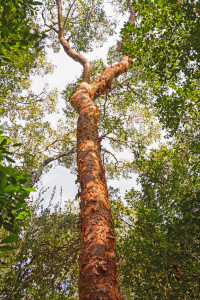 Ever heard of the gumbo-limbo tree? No, it’s not from a fantasy book, it’s a real tree that lives in the Everglades. In fact, it’s one of the best-known trees in south Florida. It’s also known as the “tourist tree,” because its peeling bark resembles the skin of South Florida visitors.
Ever heard of the gumbo-limbo tree? No, it’s not from a fantasy book, it’s a real tree that lives in the Everglades. In fact, it’s one of the best-known trees in south Florida. It’s also known as the “tourist tree,” because its peeling bark resembles the skin of South Florida visitors.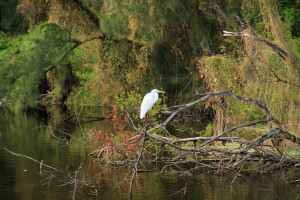 It’s officially the dry season in the Everglades and Florida, which is the best time to head down to the area to view an array of different wildlife species. During this time of year, the good weather combined with low water levels creates the perfect conditions and environment for animals and birds to congregate near bodies of water.
It’s officially the dry season in the Everglades and Florida, which is the best time to head down to the area to view an array of different wildlife species. During this time of year, the good weather combined with low water levels creates the perfect conditions and environment for animals and birds to congregate near bodies of water.





